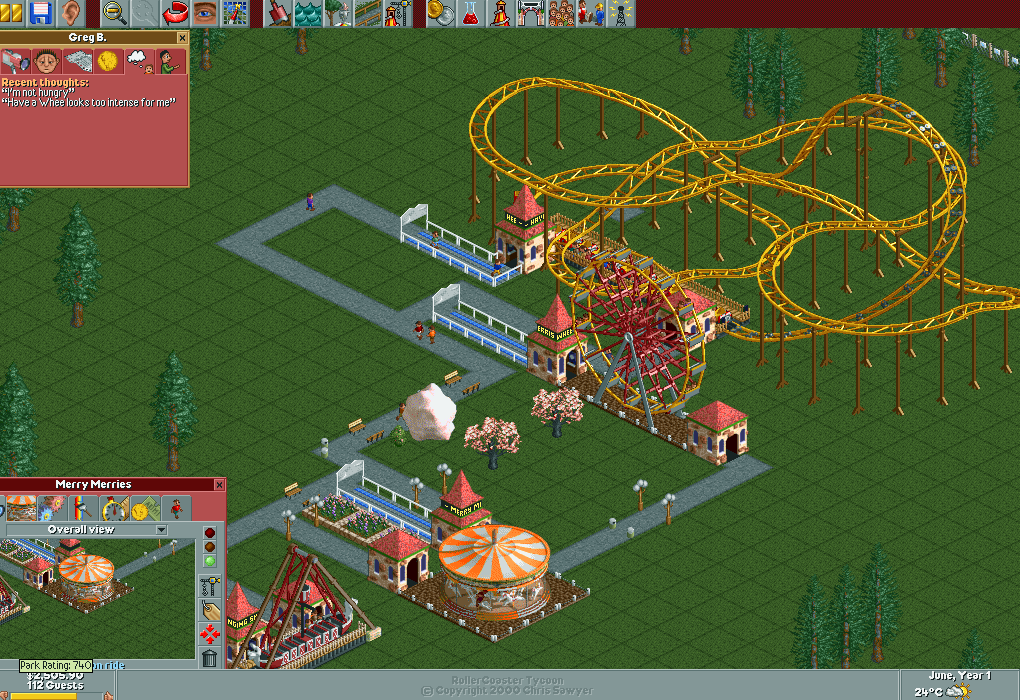I have no memories of the fateful day in 1999 I bought Rollercoaster Tycoon. I don’t remember what got me interested in the game. I get nauseous as soon as I get on a bus, so it’s safe to say I’m not a theme park fan. I do remember having an obsession with the hypercapitalist, cool America style of Disneyland Paris, forever dangled in front of me by ads that would run at the end of Disney movie VHS tapes. But Rollercoaster Tycoon needed no specific branding to appeal. It just has you, right from its box illustration with the rollercoaster whizzing just out of view, the bright logo with its pleasant rollercoaster-esque bend. Rollercoaster Tycoon screams fun before you’ve even started it (even literally, on the back of the box).
Nowadays, games let you manage just about anything – hospitals, zoos, cafés – but in those management simulations you’re responsible first and foremost for someone’s well-being, or advancing your business. Of course you’re supposed to build a thriving theme park, but Rollercoaster Tycoon is interested in the mechanics of fun. Every aspect of it leads back to fun, and it explains why fun is at the root of your success as a player in terms that are easy to understand.
It is almost a meta look at how game designers try to get people to play their games: the overarching question is always what engages people and makes them stick around. As long as your guests are having fun and feel that they are getting value for their money, they will stay in your park. There, they will continue to spend money until they run out, and hopefully leave satisfied. Depending on the season and weather, they may favour different attractions. New things are always particularly exciting to them.
To have a successful park, money is only important in as far as you can reinvest it into the park itself in order to further attract customers and heighten customer satisfaction. The game offers the graphs and spreadsheets any micromanaging strategy players loves, but you don’t really need them. The people you’re working for are right there on your screen, hollering on rollercoasters and giving a hop and a little squeal after finishing a fun ride. They can complain about pricing, lack of thrills or overly busy walkways. They will tell you what to do, so as long as you keep an eye on the customers you’re serving, you can’t really go wrong.
